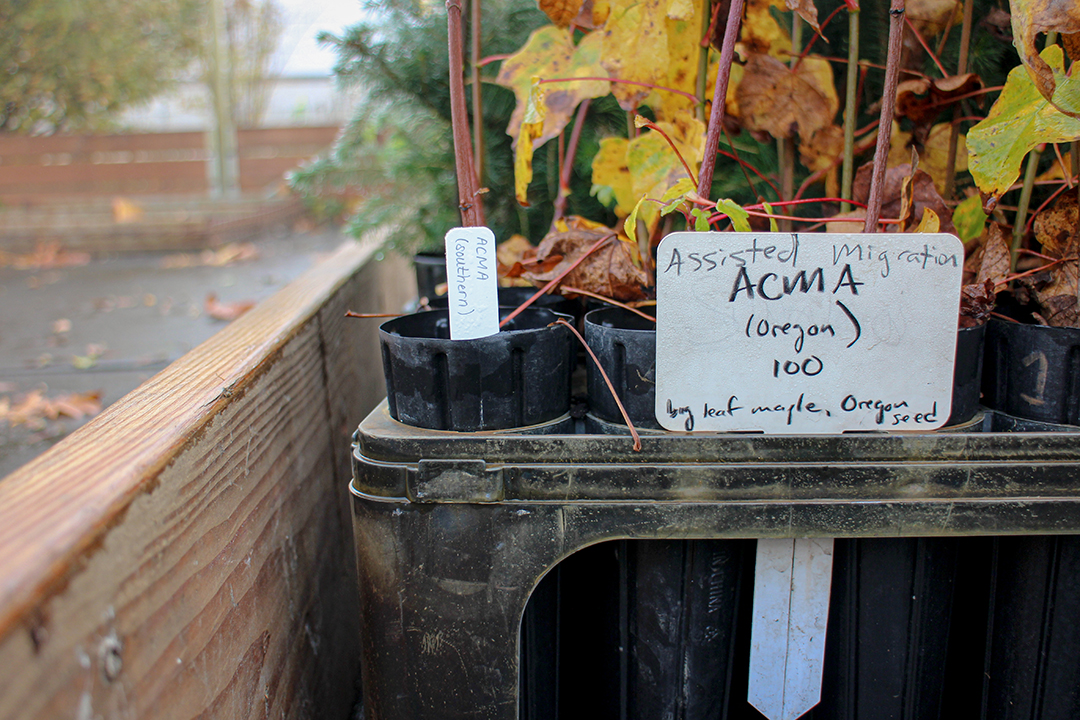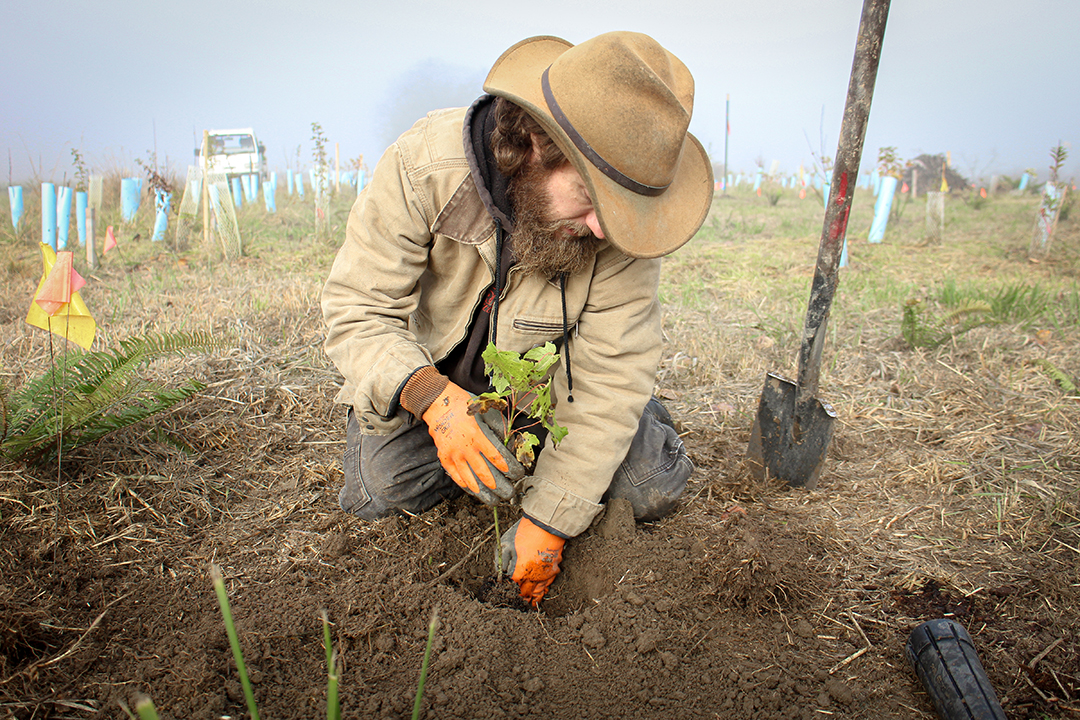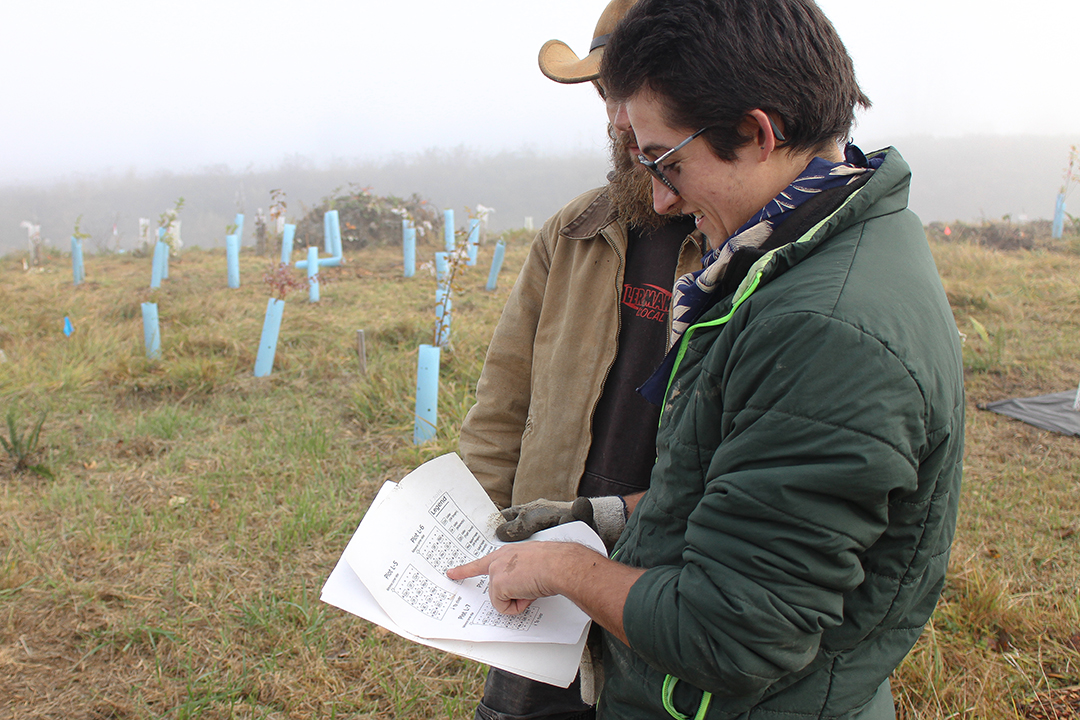Assisted Tree Migration: Transplanting
This blog post is part 3 of a series following the Assisted Tree Migration Project—an experimental planting designed by Oxbow’s Conservation Team, headed by Matt Distler, Ph.D., where we are tracking the growth and health of different native tree species with various geographic seed sources to understand which are better adapted to thrive long-term in the face of climate change. In Part 1, we outline exactly what Tree Migration is, and share the project goals, map, and more. In Part 2, we detail the stratification and sowing process.
A Pertinent Planting
On the morning of November 9, I followed Oxbow’s habitat restoration technicians Collin and Shard to “the point,” a peninsula hugged by the sharp curve of the Snoqualmie River. Here, they have been restoring the riparian zone between the river and our farm fields and they’ve prepped the landscape for the latest step in Oxbow’s Assisted Tree Migration experiment—transplanting bigleaf maple seedlings sown from our project’s southernmost seed source in Oregon. Over the next several years, Oxbow’s Conservation Team will monitor the health of these plants and compare them to maples grown from local and Willamette Valley (central) Oregon seed sources as well as other native tree species grown from Washington seed sources, in hopes of determining which genetic stocks are most suitable for our warming climate. This work has never been more relevant than now.

The day I took notes and photos of Collin and Shard transplanting the maples would become the first day in a record-breaking 14-day November drought. November is typically the area’s wettest month and is perfect for planting because fall and winter rain helps young trees develop strong roots before summer dry spells. But this summer and fall have been unseasonably dry and warm:
- This summer was the driest on record in Seattle and saw the most 90-degree days in a calendar year.
- October reached record-high temperatures. At 88°, October 16 was Seattle’s latest 80+ degree temperature in recorded history.
- Wildfire smoke made the city’s air quality the actual worst in the world — with uncertain health effects.
Experts believe this record-setting weather could be a dress rehearsal of what’s to come. As the world keeps warming, climate models predict that the region’s summers will continue to become drier and hotter.

Plotting Progress
This winter, Oxbow’s Conservation Team will continue to plant trees and other plant species into the 16 experimental blocks for this project. Each 24×30′ plot contains 12 native tree species or seed sources in a randomized position. Soil moisture and temperature are already being continuously monitored. Height, vigor, survivorship, and bud phenology will be monitored annually for 3 years and again in years 5 and 10. For now, Shard and Collin are doing their best to nurture these young trees and protect them from curious, nibbling beavers in hopes the maples and other plants will, in turn, promote a healthy, biodiverse habitat and help protect our climate from global warming.

Working Together
We’re very excited about this project, but it’s not enough to work in isolation. Oxbow is an active collaborator in the Forest Adaptation Network (FAN), a group of restoration practitioners from around the region who are concerned about climate change and working to adapt restoration methods to changing realities. As part of this network, we’re working with staff from city and county government agencies and numerous other non-profits organizations to develop shared standards for selecting, planting, and monitoring plant materials from non-local seed sources to be used in regional restoration projects. By sharing methods and making our monitoring data compatible and accessible, we’ll make it easier to learn from each other and build on each other’s innovative approaches as we go forward into a changing climate.
